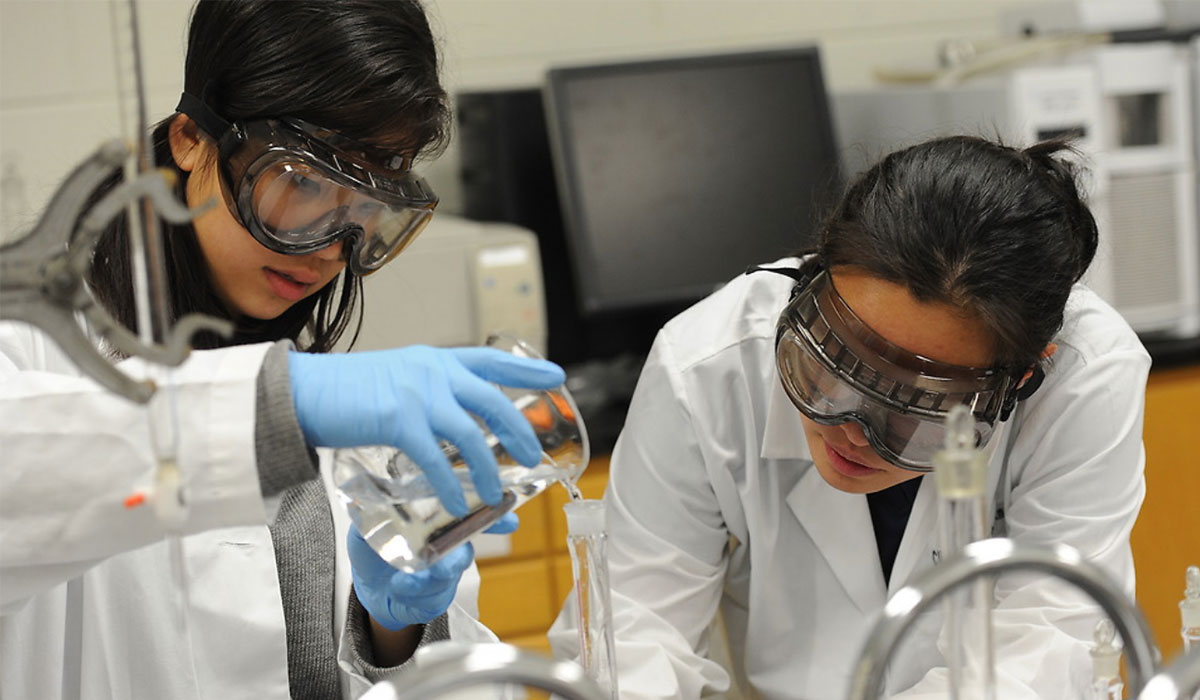
The objective of the environmental chemistry program is to provide high-level education for students interested in environmental chemistry and environmental science.
This course of study prepares students for a wide range of careers. Environmental scientists and specialists are engaged in a very broad variety of tasks, such as providing scientific or technical guidance, support, coordination or oversight to government agencies, reviewing and implementation of technical standards, guidelines, policies and regulations, collection, analysis, management and reporting of environmental data, communication of scientific and technical information to the public as well as to a variety of organizations, and providing input for the development of policies, strategies and codes of practice for environmental management.
Suggested Sequence of Courses for a B.S. in Environmental Chemistry
Freshman Year:
- General Chemistry I, II (CHEM 103 or Chem 103H /104 or 104H)
- General Chemistry Laboratory I, II (CHEM 113/114)
- Calculus I, II (MATH 111/112 or MATH 121/122)
Sophomore Year:
- Organic Chemistry I, II (CHEM 203/204)
- Organic Chemistry Laboratory I, II (CHEM 213/214)
- Physics I, II (PHYS 205 or 215/206 or 216)
- Physics Lab I, II (PHYS 225/226)
- Mechanisms of Life I, II (BIOL 105, 106)
- Mechanisms of Life Lab I, II (BIOL 115, 116)
Junior and Senior Year:
- Principles of Environmental Science (CHEM 101)
- Introduction to Earth Science (CHEM 110)
- Analytical Chemistry (CHEM 311)
- Physical Chemistry I (CHEM 351)
- Physical Chemistry Lab I (CHEM 353)
- Instrumental Analysis & Chemical Spectroscopy (CHEM 408)
- Chemical Instrumentation Lab (CHEM 418)
- Advanced Inorganic Chemistry (CHEM 401)
- Science Communication (CHEM 405)
- Biochemistry I (CHEM 471)
- Probability and Statistics (Math 114)
- Environmental Engineering (CE or ENGR 438)
- Environmental Politics and Policy (POL 478 or HSEV 204)
